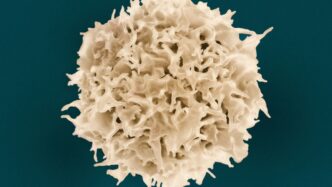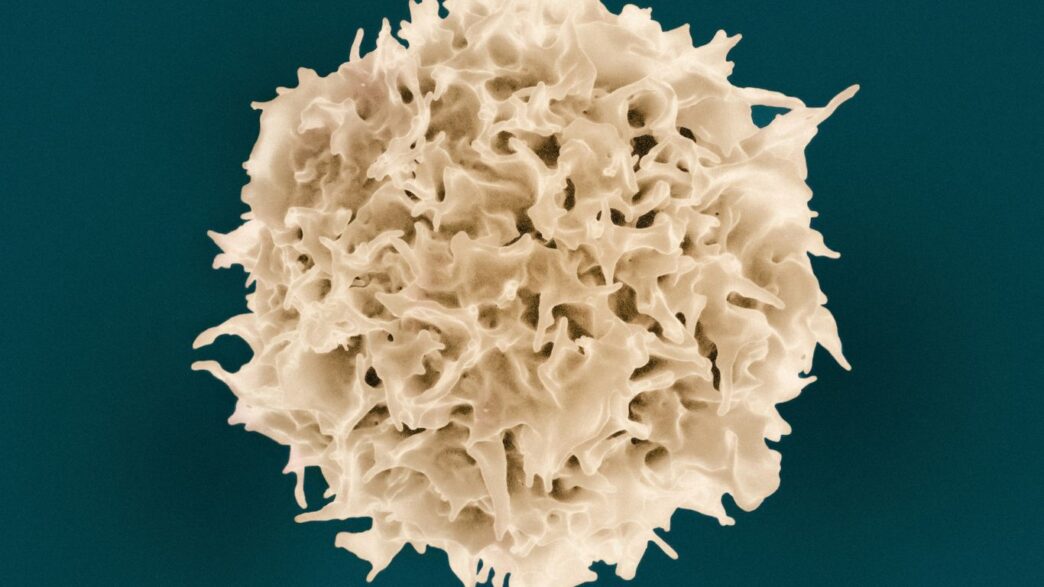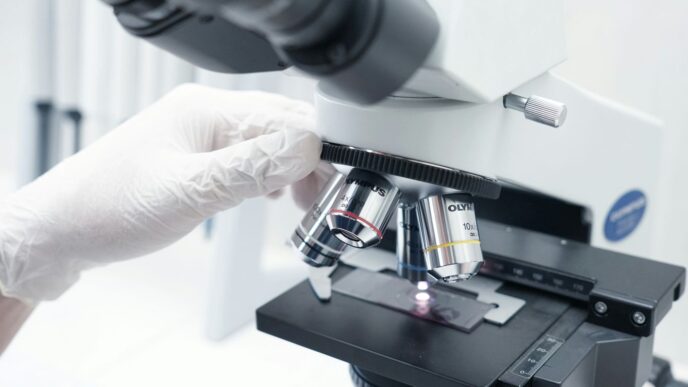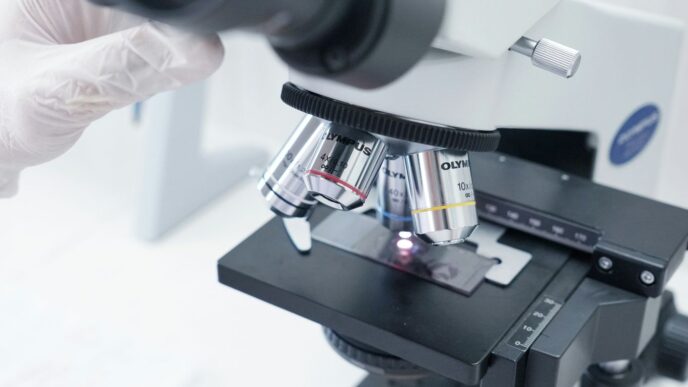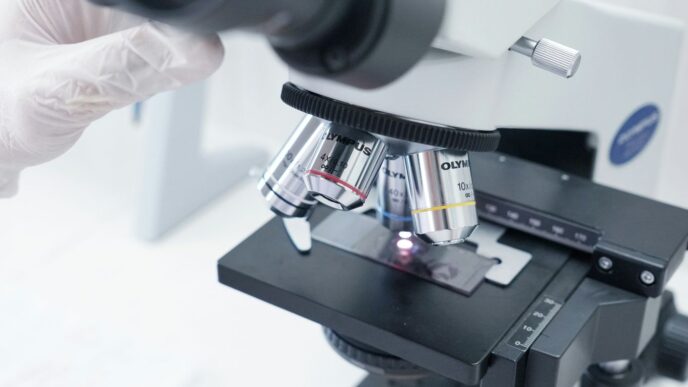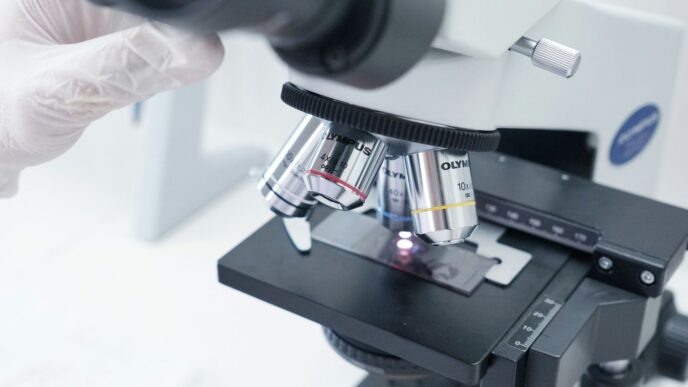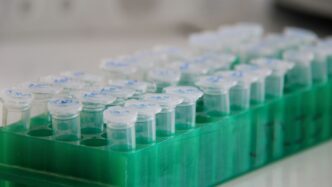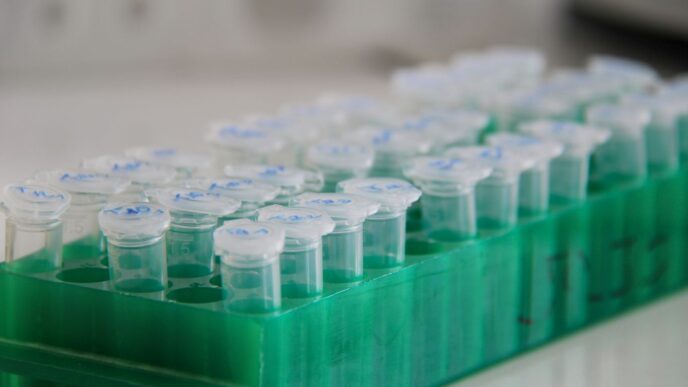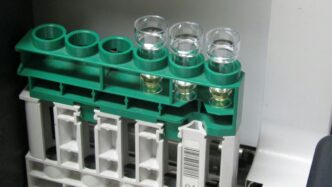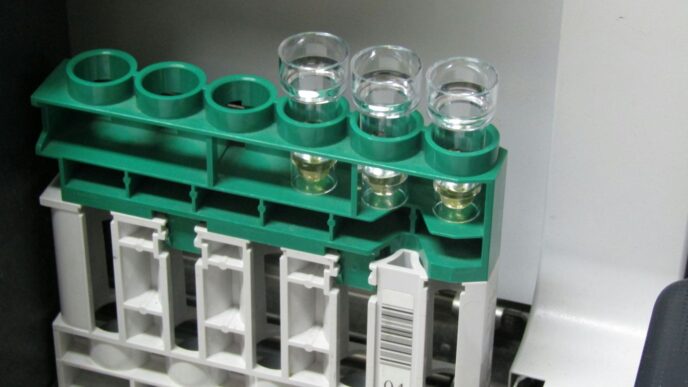Ever wondered what happens when a cell meets a hypotonic solution? It’s all about water movement, and it can get pretty interesting. Basically, a hypotonic solution has less ‘stuff’ dissolved in it compared to the inside of the cell. This difference makes water want to rush into the cell. Think of it like a sponge soaking up water – the cell starts to swell up. What happens next really depends on the type of cell. Some cells can handle it, others not so much. Let’s break down what happens to a cell in a hypotonic solution.
Key Takeaways
- A hypotonic solution has a lower concentration of solutes and a higher concentration of water than the inside of a cell.
- When a cell is in a hypotonic solution, water moves into the cell through osmosis.
- Animal cells, lacking a rigid wall, can swell and burst (lyse) in hypotonic solutions.
- Plant cells swell but are protected from bursting by their cell walls, leading to turgor pressure.
- Organisms have adaptations, like contractile vacuoles, to manage water influx in hypotonic environments.
Understanding Cell Behavior: What Happens in a Hypotonic Solution?
Defining Hypotonic Solutions
So, what exactly is a hypotonic solution? Think of it like this: if you have a cell, and you put it into a liquid that has a lower concentration of dissolved stuff (like salts or sugars) compared to what’s inside the cell, that liquid is called hypotonic. It’s like the outside environment is a bit diluted compared to the cell’s internal environment. This difference in concentration is the key player here.
The Movement of Water into Cells
Because the outside solution is more diluted, it means there’s a higher concentration of water molecules outside the cell than inside. Water likes to move from areas where it’s more concentrated to areas where it’s less concentrated, kind of like how a crowd naturally spreads out. This movement of water across the cell’s membrane is called osmosis. In a hypotonic solution, water will naturally flow into the cell. This happens because the cell membrane acts like a sieve, letting water pass through but not necessarily the dissolved stuff. The cell starts to take on more and more water, trying to balance things out with the surrounding liquid.
Cellular Responses to Hypotonic Environments
So, what actually happens inside a cell when it’s dropped into a hypotonic solution? It’s all about water movement, and different cells react in pretty distinct ways.
Animal Cell Swelling and Lysis
Think about an animal cell, like a red blood cell. It doesn’t have a tough outer wall. When it’s in a hypotonic solution, there’s way more water outside the cell than inside. Water, being the curious molecule it is, starts moving into the cell through osmosis. It’s like the cell is trying to balance things out with its surroundings. But here’s the catch: animal cells aren’t built to handle a massive influx of water. They just keep taking it in until they swell up like a balloon and eventually burst. This bursting is called lysis, or more specifically, cytolysis. It’s not a good situation for the cell, obviously.
Plant Cell Turgor and Cell Walls
Plant cells, on the other hand, have a bit of an advantage: a rigid cell wall. When a plant cell is in a hypotonic solution, water also rushes in. The cell swells, and the internal pressure against the cell wall builds up. This pressure is called turgor pressure. But unlike animal cells, the sturdy cell wall stops the plant cell from bursting. It acts like a natural limit, preventing the cell from taking on too much water. The cell becomes firm and ‘turgid’, which is actually how most plant cells like to be. This turgor pressure is super important for keeping plants upright and their leaves spread out to catch sunlight.
Osmosis and Water Balance
The Principle of Osmosis
So, what exactly is osmosis? Think of it as water’s tendency to move. It’s the process where water molecules cross a special kind of barrier – a semipermeable membrane – from an area where there’s a lot of water (and fewer dissolved things) to an area where there’s less water (and more dissolved things). It’s like water trying to even things out.
Concentration Gradients and Water Flow
This movement is all about concentration. Imagine you have two sides separated by that semipermeable membrane. If one side has a high concentration of solutes (like salt or sugar) and the other has a low concentration, water will naturally flow from the low-solute side to the high-solute side. This net movement of water continues until the concentration of solutes is roughly the same on both sides, or until something else stops it.
Here’s a quick breakdown:
- High Solute Concentration: Means lower concentration of free water molecules.
- Low Solute Concentration: Means higher concentration of free water molecules.
- Semipermeable Membrane: Lets water pass through but not most dissolved substances.
Water doesn’t really
Consequences of Water Influx
So, what happens when all that water starts rushing into a cell because it’s sitting in a hypotonic solution? It’s not always a good thing, especially if the cell isn’t prepared for it.
Cytolysis in Animal Cells
Think about animal cells, like our red blood cells. They don’t have that tough outer layer, the cell wall, that plant cells do. When water floods into an animal cell in a hypotonic environment, the cell starts to swell up like a balloon. Eventually, the cell membrane can’t handle the pressure and it just bursts. This dramatic event is called cytolysis. It’s basically the cell exploding from too much internal water. Imagine trying to stuff way too much stuff into a plastic bag – eventually, it’s going to pop!
Turgor Pressure in Plant Cells
Plant cells have a bit of an advantage here. They have a sturdy cell wall surrounding their membrane. When water enters a plant cell in a hypotonic solution, the cell swells, but the cell wall pushes back. This resistance creates something called turgor pressure. It’s like the cell inflating against its own rigid container. This pressure is actually really important for plants; it helps keep them firm and upright. Think of a wilted plant versus a healthy, perky one – that difference is often due to turgor pressure. The cell wall prevents the plant cell from bursting, but it does get quite firm and full of water. This pressure can build up until it balances the tendency for water to enter, reaching a sort of equilibrium.
Adaptations for Hypotonic Conditions
So, cells don’t just sit there and take it when they’re in a hypotonic solution, right? They’ve got ways to deal with all that extra water trying to rush in. It’s pretty neat, actually.
Contractile Vacuoles in Protists
Think about single-celled organisms, like amoebas or paramecia. They live in watery environments, and sometimes that water is less salty than what’s inside them. Water wants to come in, and if it kept coming, they’d just pop like a water balloon. So, they’ve evolved these special little organelles called contractile vacuoles. They act like tiny bilge pumps. They collect the excess water that enters the cell and then, bam, they contract and push it back out. This constant pumping is key to their survival in freshwater. It’s a pretty efficient system for managing water balance.
The Role of Cell Walls
Now, plant cells and bacteria have a secret weapon: a cell wall. It’s like a sturdy outer layer that gives them structure. When water rushes into a plant cell in a hypotonic solution, the cell membrane pushes out against this wall. The wall can only stretch so much, though. It creates a counter-pressure, called turgor pressure, that stops more water from coming in. This pressure is actually what makes plants stiff and upright. Without it, they’d wilt. So, the cell wall isn’t just for support; it’s a critical adaptation that prevents these cells from bursting when they’re in a watery environment.
Clinical and Ecological Significance
Maintaining Homeostasis
So, we’ve talked about how cells react when they’re in a hypotonic solution, with water rushing in. This isn’t just some abstract science experiment; it’s actually super important for keeping our bodies and other living things running smoothly. Maintaining a stable internal environment, or homeostasis, relies heavily on controlling water balance. Think about your kidneys – they’re constantly working to make sure the concentration of solutes and water in your blood stays just right. If things get too diluted or too concentrated, it can mess with all sorts of bodily functions, from nerve signals to how your muscles work.
Here’s a quick look at why this balance matters:
- Fluid Balance: Your cells need the right amount of water to function. Too much or too little can cause problems.
- Nutrient Transport: Water helps move nutrients into cells and waste products out.
- Cell Integrity: Preventing cells from bursting or shrinking is key to their survival and the overall health of tissues and organs.
Impact on Organisms in Different Environments
Now, let’s zoom out a bit. The environment an organism lives in plays a huge role in how its cells deal with water. Imagine a fish living in freshwater versus one living in the ocean. These are very different worlds in terms of water concentration.
- Freshwater Organisms: These guys are constantly dealing with a hypotonic environment. Their bodies have a higher solute concentration than the surrounding water, so water tends to flow into them. They’ve developed neat tricks, like specialized kidneys and contractile vacuoles (in some single-celled organisms), to get rid of excess water and keep their internal balance.
- Marine Organisms: On the flip side, many marine animals live in saltwater, which is often hypertonic compared to their cells. Water tends to leave their cells, so they have to actively drink water and conserve it to avoid dehydration. It’s a constant battle to keep enough water inside.
- Terrestrial Organisms: Life on land presents its own challenges. Organisms need ways to get water and then regulate its loss through things like sweating or evaporation. The internal environment of a land animal is generally kept isotonic or slightly hypotonic to its cells to prevent water loss.
Understanding how cells handle hypotonic solutions helps us appreciate the complex adaptations that allow life to thrive in such a wide variety of watery worlds.
Wrapping Up: What We Learned About Hypotonic Solutions
So, when a cell finds itself in a hypotonic solution, it’s basically like a sponge soaking up water. Because there’s less stuff dissolved outside the cell than inside, water rushes in to try and even things out. For cells without a tough outer wall, like our own animal cells, this can be a problem. They can swell up and even burst, which isn’t good. Plant cells, though, have that sturdy wall, so they just get firm and happy. It really shows how important it is for cells to be in the right kind of environment, and how water movement, or osmosis, plays a big part in keeping everything working right.

